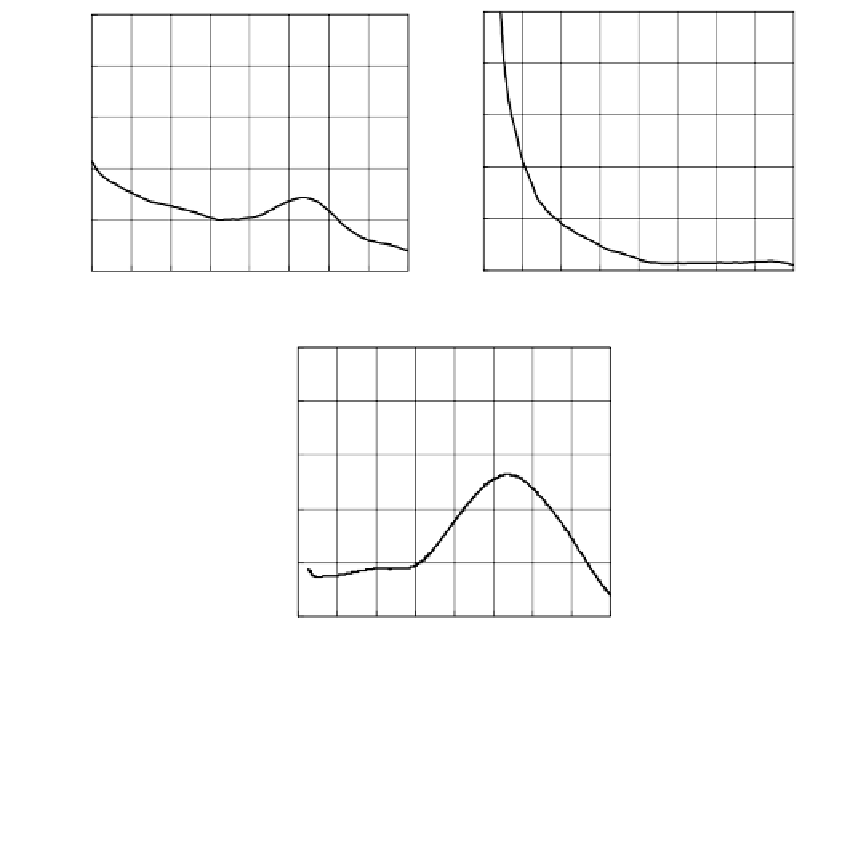Biomedical Engineering Reference
In-Depth Information
1
1
0.8
0.8
0.6
0.6
0.4
0.4
0.2
0.2
0
0
300
350
400
450
500
550
600
650
700
300
350
400
450
500
550
600
650
700
Wavelength (nm)
Wavelength (nm)
(a)
(b)
1
0.8
0.6
0.4
0.2
0
300
350
400
450
500
550
600
650
700
Wavelength (nm)
(c)
FIGURE 17.5
Absorption spectra of (a) PM suspension, (b) ITO-coated PET film, and (c) dried bR film deposited on ITO-PET
substrate.
represents conductivity of the medium,
r
1
and
r
2
are the distances from each pole
to the position
where
d
, and the displacement current is
I
. This equation is valid at all distances
from the dipole.
If the distance between the dipole and the measured point is large in comparison to the
dipole length, the current dipole potential can be approximated by
r
r
Id
r
r
(17.2)
d
3
4
indicates directional sensitivity, so the potential intensity falls
as a function of 1/
r
2
in all directions. The only fundamental difference between the dipole
moment and the current dipole is that charge is replaced by charge per second in the lat-
ter. Current dipole values for each excited state of bR photocycle can be derived by divid-
ing the measured dipole moment by the lifetime of that state.
To determine the total induced dipole moments of the bR film, the population distribu-
tion of all excited states within the bR film is required. Referring to the photocycle intro-
duced in Section 17.1, the time-dependent population of each excited state can be obtained
The vector product d
·r


